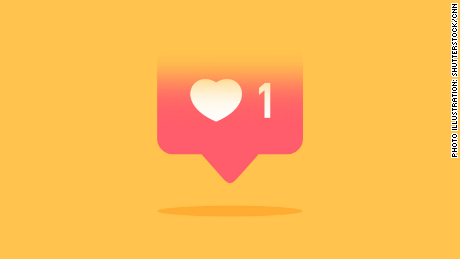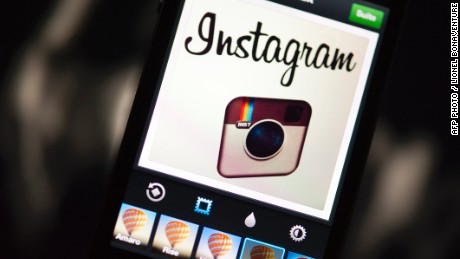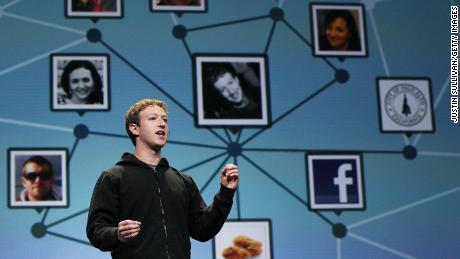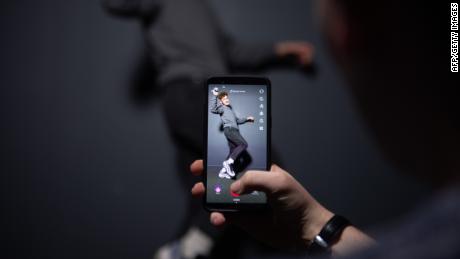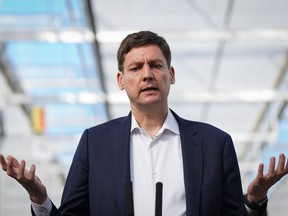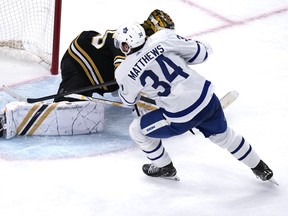Instagram racked up
over 100,000 users in less than a week, making it one of the fastest growing apps ever at the time. By December, it had hit
1 million sign-ups. Instagram cofounder Kevin Systrom
predicted at the time that “communicating via images” would “take off” in the years to come.
By the end of the decade, Instagram had more than 1 billion users and was part of one of the most valuable tech companies in the world. But it’s also working to beat back
a newer rival — TikTok — which is growing fast and looks as novel as Instagram did in the early 2010s.
Instagram’s evolution throughout the decade mirrors the evolution of the broader social media landscape over that time. It started out as a runaway success in the App Store at a time when small startups still appeared to have a fighting chance to compete with more established companies. In 2012, it got acquired by
Facebook (FB) for a then-astounding $1 billion in a sign of the consolidation to come across the tech industry. In recent years, Instagram has been copying features from rival networks such as
Snapchat (SNAP) and TikTok to adapt to shifting user habits. Like its parent company, Instagram has also had to confront the dark sides of its platform, from misinformation to online bullying.
“When Instagram started, it was primarily about following people without their approval, it was about sharing permanent photos with a wide group of people, and it was about sharing relatively frequently,” said Josh Miller, a former product lead at Facebook.
Now, Instagram — like so much of the social media industry — is focusing on ephemeral posts, experimenting with 15-second music videos and offering options to share privately rather than just publicly.
/*==================================
TIMELINE
==================================*/
/*—– STYLES —–*/
.mod
width: 90%;
width: calc(100% – 40px);
clear: both;
margin: 0 50px 0 10px;
.timeline-title
color: #262626;
margin-bottom: 0;
font-family: CNN Business,CNN,Helvetica Neue,Helvetica,Arial,Utkal,sans-serif;
.source p
font-family: CNN Business,CNN,Helvetica Neue,Helvetica,Arial,Utkal,sans-serif;
font-size: 12px;
color: #8c8c8c;
letter-spacing: .5px;
.timeline
line-height: 1.4em;
list-style: none;
margin: 0;
padding: 0;
width: 90%;
.event-title
font-size: 1.375em;
margin-bottom: 1rem;
font-weight: 600;
color: #262626;
.timeline-divider
float: left;
clear: both;
margin: 0 50px 0 0;
width: 100%;
max-width: 300px;
height: 0;
margin-top: 15px;
border-bottom: #e6e6e6 1px solid;
p
margin: 0;
/*—– TIMELINE ITEM —–*/
.timeline-item
padding-left: 40px;
position: relative;
.timeline-item:last-child
padding-bottom: 0;
/*—– TIMELINE INFO —–*/
.timeline-info
font-family: CNN Business,CNN,Helvetica Neue,Helvetica,Arial,Utkal,sans-serif;
font-size:16px;
color: #262626;
letter-spacing: 0px;
margin: 0 0 .25em 0;
/* text-transform: uppercase; */
.timeline-info span
font-weight: 700;
/*—– TIMELINE MARKER —–*/
.timeline-marker
position: absolute;
top: 0;
bottom: 0;
left: 0;
width: 8px;
.timeline-marker:before
background: #00c59e;
border: 3px solid transparent;
border-radius: 100%;
content: “”;
display: block;
height: 8px;
position: absolute;
top: 4px;
left: 0;
width: 8px;
transition: background 0.3s ease-in-out, border 0.3s ease-in-out !important;
.timeline-marker:after
content: “”;
width: 3px;
background: #d9d9d9;
display: block;
position: absolute;
top: 24px;
bottom: 0;
left: 6px;
.timeline-item:last-child .timeline-marker:after
content: none;
.timeline-item:not(.period, .start):hover .timeline-marker:before
background: transparent;
border: 3px solid #00c59e;
/*—– TIMELINE CONTENT —–*/
.timeline-content
padding-bottom: 16px;
color: #444;
.timeline-content ul
padding:0px 0px 0px 20px;
.timeline-content ul li
font-family: CNN Business,CNN,Helvetica Neue,Helvetica,Arial,Utkal,sans-serif;
padding-bottom:5px;
list-style-type:circle;
font-size:16px;
line-height:24px;
color: #262626;
letter-spacing: 0px;
margin: 0 0 .25em 0;
.timeline-content li:last-child
margin-bottom: 0;
/*—– TIMELINE PERIOD —–*/
.period
padding: 0;
.period .timeline-info
display: none;
.period .timeline-marker:before
background: transparent;
content: “”;
width: 15px;
height: auto;
border: none;
border-radius: 0;
top: 0;
bottom: 30px;
position: absolute;
border-top: 0px solid #d9d9d9;
border-bottom: 3px solid #d9d9d9;
.period .timeline-marker:after
content: “”;
height: 32px;
top: auto;
.period .timeline-content
padding: 40px 0 70px;
.period .timeline-title
margin: 0;
/*—– TIMELINE FIRST PERIOD—–*/
.start
padding: 0;
.start .timeline-info
display: none;
.start .timeline-marker:before
background: transparent;
content: “”;
width: 15px;
height: auto;
border: none;
border-radius: 0;
top: 0;
bottom: 30px;
position: absolute;
border-top: 0px solid #d9d9d9;
border-bottom: 3px solid #d9d9d9;
.start .timeline-marker:after
content: “”;
height: 32px;
top: auto;
.start .timeline-content
padding: 20px 0 55px;
.start .timeline-title
margin: 0;
/*—– @MEDIA —–*/
@media screen and (max-width: 540px)
.timeline
width:98%;
.mod
width: 85%;
width: calc(100% – 20px);
.timeline-divider
width: 100%;
max-width: 540px;
.timeline-marker:before
width: 8px;
height: 8px;
.timeline-title
font-size:18px;
.timeline-info
font-size:15px;
.timeline-content ul
margin-bottom:5px;
.timeline-content ul li
padding-bottom:0px;
list-style-type:circle;
font-size:15px;
line-height:22px;
font-weight:400;
A time before Facebook was the only game in town
At the time of Instagram’s launch, Facebook was a major player in social media, but nowhere near as dominant as it is today.
Other tech giants, including
Google (GOOG) and
Apple (AAPL), were also trying to make their own social networks. Snapchat launched in 2011, and Twitter
went public in 2013. It felt like a lot of social networks could coexist. But with just 24 hours in a day, users only had so much attention to go around and Facebook proved to be very masterful at garnering it.
Google has since
shut down Google+, and Apple’s music-focused social network Ping never took off. Twitter’s audience stalled around 300 million monthly users, a far cry from Facebook’s 2.45 billion monthly users. Snapchat — which arguably set the tone for the decade by pioneering disappearing content — has proved to be more niche than mainstream.
“When Snapchat launched, it presented a totally different way of communicating,” said eMarketer principal analyst Debra Aho Williamson. “What ended up happening, is Snapchat has to a great extent changed the way young people communicate, but it hasn’t taken off with the older groups the way Facebook ended up taking off.”
By the end of the decade, the industry has consolidated quite a bit. Following its acquisition of Instagram, Facebook bought messaging platform WhatsApp for $22 billion in 2014. Facebook also
reportedly tried to buy Snapchat for $3 billion in 2013, but founder and CEO Evan Spiegel declined.
In the second half of the decade, a number of social media applications did launch, but unlike Instagram and Snapchat, they never were seen as true competitors to Facebook. Their names —
Ello, Peach,
Meerkat, Mastodon,
Vero — are little more than footnotes now.
For a time, it looked like Instagram would still maintain its independent spirit even after it was acquired. “Facebook let Instagram be this little island that was pumping out standalone apps and doing things a bit differently than Facebook,” said
John Barnett, who joined Instagram in 2014 as a product manager when it employed fewer than 75 people.
But that wouldn’t last. In 2018, Instagram cofounders Systrom and Mike Krieger
left the company reportedly because of tensions with Facebook CEO Mark Zuckerberg over the direction of Instagram. Facebook recently
added the words “from Facebook” to the Instagram app and now refers to Instagram’s public relations staff as “Facebook Company” spokespeople.
With Instagram, WhatsApp, Messenger and its eponymous app, Facebook boasts four platforms that each have more than 1 billion users. It is so dominant that a growing chorus of politicians are now calling for Facebook to be broken up. Democratic presidential candidate Elizabeth Warren has suggested Facebook
should spin off Instagram in particular. Facebook’s reputation also took a major hit after revelations that
Cambridge Analytica obtained the personal data of as many as 87 million Facebook users, sparking a major
privacy awakening across tech.
The rise of TikTok
As the decade came to an end, social media companies found themselves on the defensive. Once seen as useful and playful ways to keep in touch with friends and family, social networks faced a wave of criticisms for spreading misinformation, enabling election meddling and failing to protect user privacy — not to mention concerns about screen-time addiction and online bullying. As a result, Instagram and Facebook are
rethinking “likes” and their impact on mental health, Twitter is working on
improving well-being, and YouTube has started abbreviating subscriber counts on the platform to help address concerns from its star creators about stress.
The belief that connecting people and building platforms to share information are fundamentally good was challenged again and again.
It was against this backdrop that TikTok began to take off. Launched in 2016, TikTok is all about viral content and racking up lots of views and likes. It’s reminiscent of
Vine — a popular six-second video service acquired by Twitter that was shut down in 2017.
Users share videos of themselves doing things like cooking, dancing and lip-syncing. They often feature music in the background. Like Instagram, users can follow other people and “heart” or comment on videos. But the similarities stop there.
Natalie Bazarova, an associate professor at Cornell University who studies social media, said TikTok is “totally different” from Facebook and Instagram. “There is nothing there about building social connections,” she said. “It’s about using algorithms to find content that will hold your attention. It’s an entertainment-based platform.”
That differentiation has made it a hit: TikTok has been installed nearly 1.6 billion times globally to date, according to data from Sensor Tower.
(Ironically enough, it’s partly because of Instagram that TikTok gained traction. The startup
flooded its competitors with ads.)
Facebook — and Instagram — have taken notice of TikTok’s success and have released their own copycats of the app. In 2018, Facebook launched an app called Lasso, which lets users create and share short videos with music and camera effects. Earlier this year, Instagram
launched a new tool called “Reels” in Brazil, for sharing 15-second videos with music.
How social media will evolve in the decade to come
For ABI Research analyst Eleftheria Kouri, advancements in technology this decade drove the biggest changes in social media, from better smartphone cameras and augmented reality to faster connectivity that allows people to upload Stories or TikTok videos in seconds.
Looking ahead, she believes
5G technology has the power to advance social media even further, and make way for more interactive content and immersive games.
Miller, the former Facebook product lead, believes the next decade will get people closer to feeling like they’re in the same room as people far away.
“Many of our social media experiences are an imperfect replacement for being with someone in person,” he said. “It’s hard to predict what hardware advances will bring, but I’m hopeful that one day I’ll sit down in my apartment in Brooklyn, and I’ll look across my dining room table, and I’ll be able to have dinner with my mom in Los Angeles, sitting across from me.”




